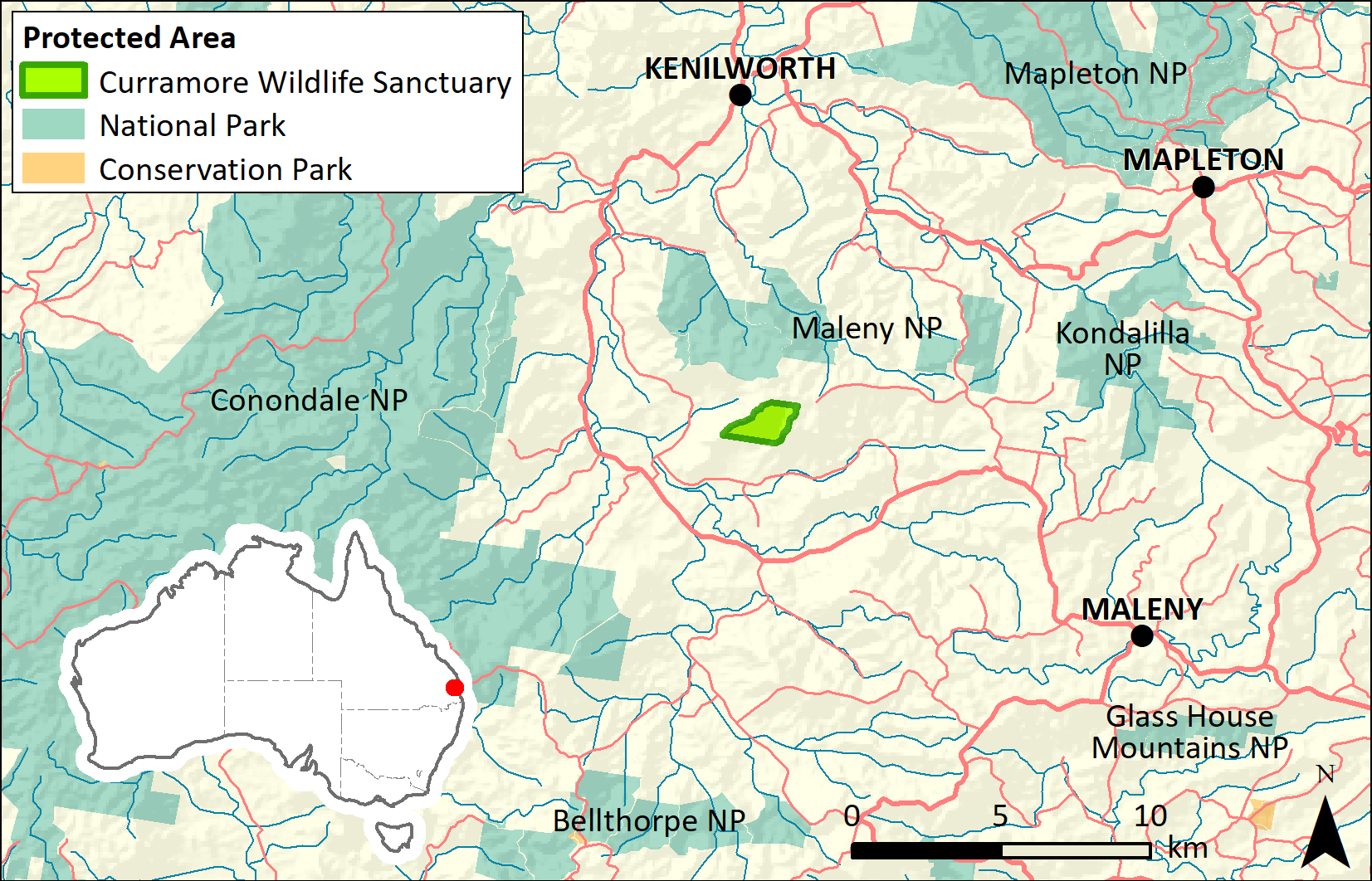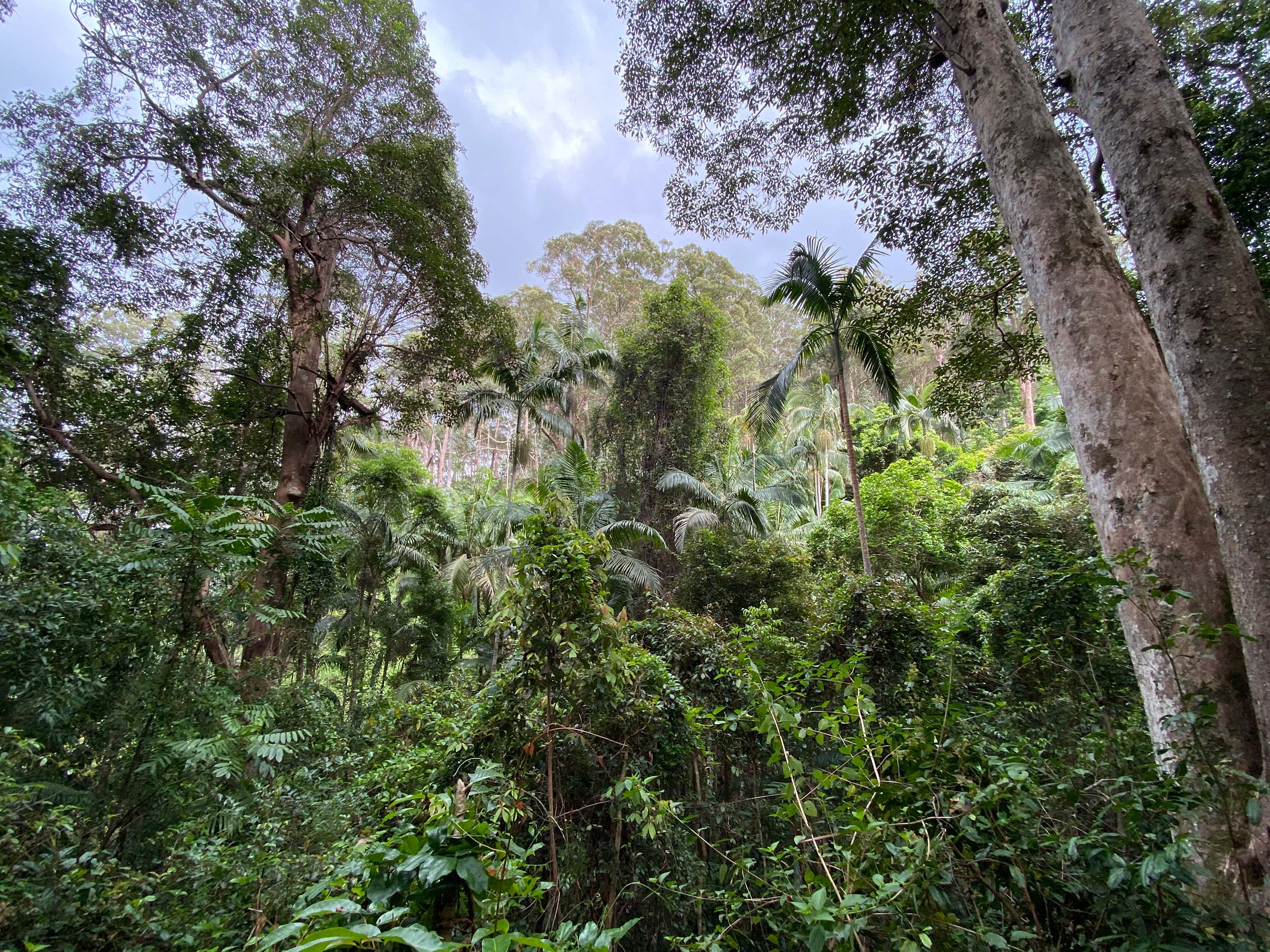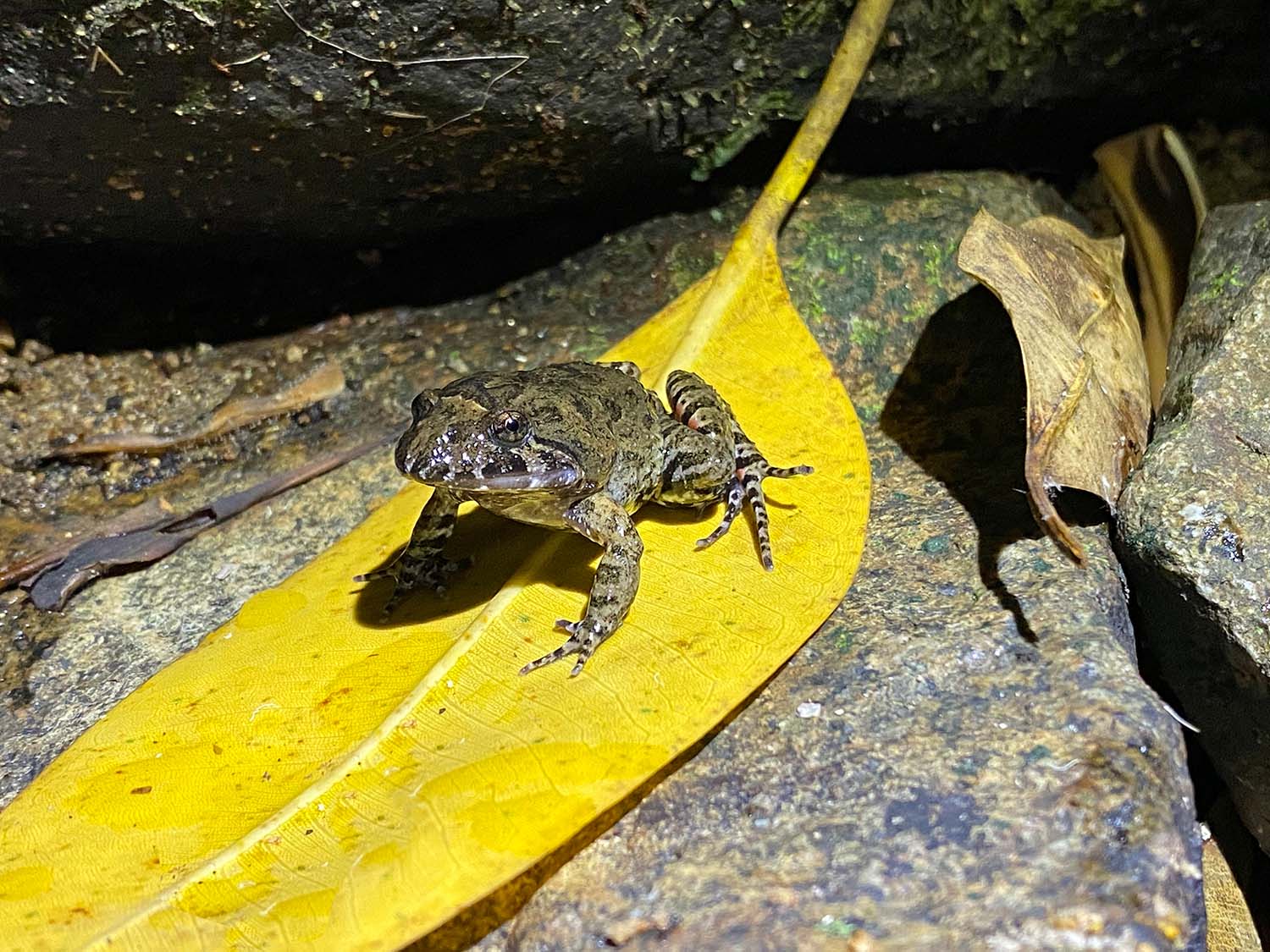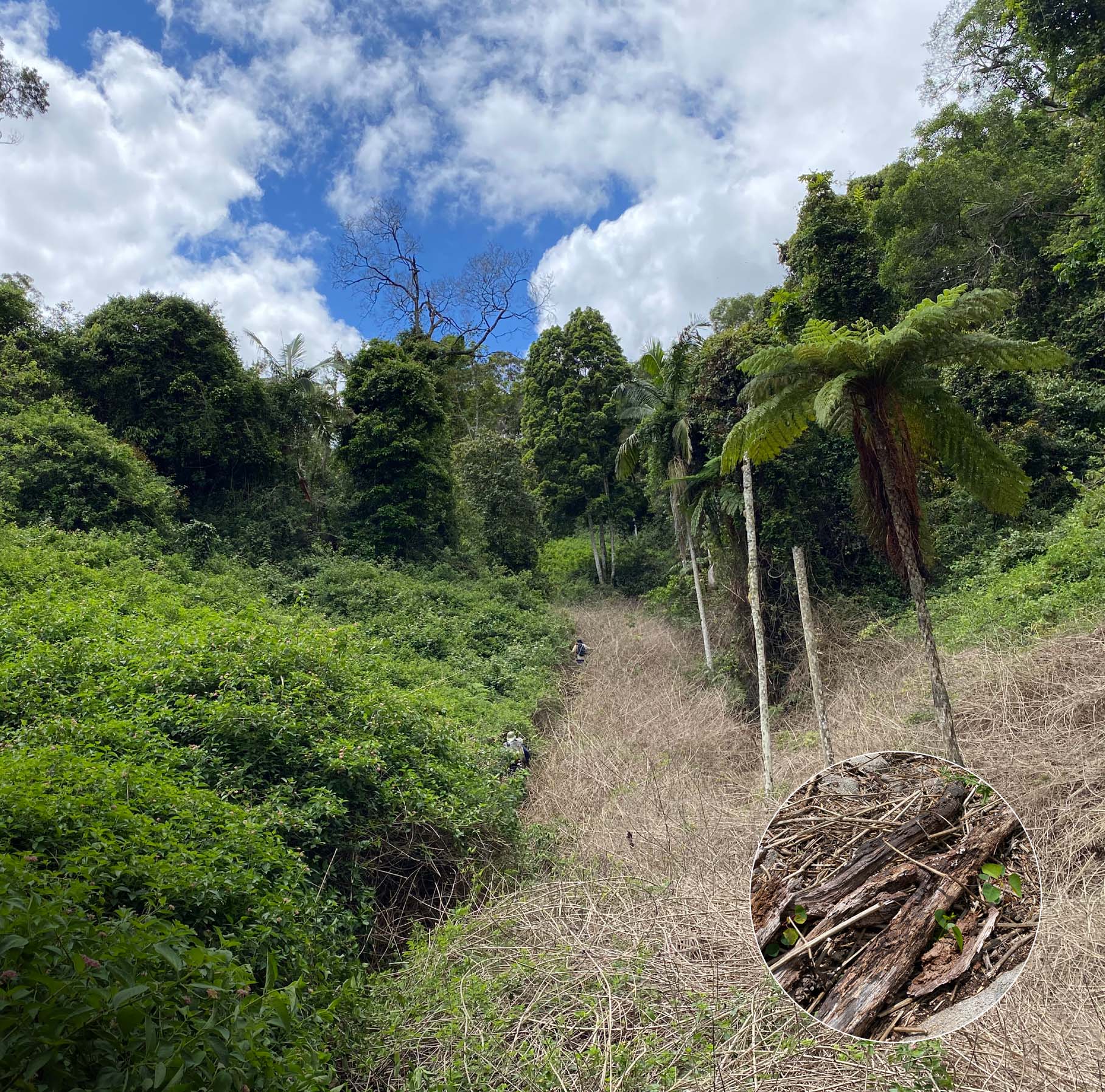By Andrew Howe, Senior Field Ecologist, Tim White, Regional Operations Manager and Alexander Watson, Regional Ecologist
Although Curramore is one of Australian Wildlife Conservancy’s (AWC) smallest sanctuaries, it is an incredibly important component of AWC’s conservation program due to its astonishing biodiversity. Curramore is also regionally significant as the largest Land for Wildlife property – landholders who manage wildlife habitat for conservation – on the Sunshine Coast.
Located in south-east Queensland, a region which has been extensively cleared for agriculture and urban development, Curramore Wildlife Sanctuary contains important wet and dry sclerophyll forest, and rainforest refugia, that support an impressive 700 species of plants and animals. Some of these significant species include a bird of paradise (the Paradise Riflebird), regionally iconic species (such as the Bunya Pine) and threatened species (e.g., the Tusked Frog, Koala, Greater Glider and Powerful Owl). Many species are not currently protected on any other AWC sanctuary or partnership area. Curramore is ideally situated in the landscape, acting as part of a forested corridor that connects Maleny National Park to the north west and other nature refuges to the east.
 Map created by Terry Webb/AWC
Map created by Terry Webb/AWC
In January 2022, through the generosity of supporters, AWC acquired 26 hectares of a neighbouring property. This not only increased Curramore’s overall size to 196 hectares but now allows AWC to access more of the sanctuary on formed tracks. This new slice of paradise is dominated by wet sclerophyll forest with patches of rainforest along damp gullies. This diverse patchwork of habitats has already demonstrated its importance as the field team have observed the vulnerable Richmond Birdwing Butterfly (one of Australia’s largest) feeding from flowers and the ancient Maleny Spiny Crayfish burrowing holes in the creek banks. AWC is hopeful of detecting other significant threatened species here such as the stunning Yellow-bellied Glider, the Long-nosed Potoroo – a super-disperser of fungi and ecosystem engineer – and the elusive Black-breasted Button-quail.
 Andy Howe/AWC
Andy Howe/AWC
Last year, ecologists undertook targeted fauna surveys over 10 days as part of AWC’s Ecohealth program. The threatened Plumed Frogmouth was heard calling from several locations deep in the creeklines; Koalas, two species of brushtail possum and the tiny Broad-toed Feathertail Glider were recorded in spotlight surveys; and the threatened Tusked Frog was detected in record numbers. Six new species for the sanctuary (3 mammals, 2 birds and one amphibian) were added to the inventory! To help survey bird fauna on the sanctuary, AWC has also developed a new community science collaboration with Birds Queensland, the Sunshine Coast branch, now undertaking monthly bird surveys.
 Andrew Howe/AWC
Andrew Howe/AWC
Since AWC acquired Curramore in 2003, Sanctuary Manager Klaus Runde and his operations team have been working tirelessly to improve the health of the sanctuary by addressing key threatening processes. The majority of work has been focused on weeds, particularly lantana, managed through targeted spraying with a broad-spectrum herbicide, manual removal and the use of controlled fire. To date, Klaus and his team have removed nearly 50% of lantana and will use key learnings from the past decade to tackle lantana in the new acquisition. Although in relatively good condition, some of the deeper rainforest-clad gullies contain walls of lantana 3 metres high. In some areas the lantana has grown so tall and thick that mature trees have collapsed under its weight. Tackling the lantana will be challenging but Klaus and his team have the skills, knowledge, and support from incredible volunteers to apply AWC’s weed management strategy and restore the condition of the forest.
 Andrew Howe/AWC
Andrew Howe/AWC
Facilitated by Barung Landcare Education and Communications Officer Megan Lee, AWC and Barung Landcare – a community-led environmental organisation established in 1989 – are providing the community with ongoing opportunities to learn about the local environment and build conservation land management skills. In April 2022, Klaus led a guided walk at Curramore for landholders carrying out rainforest restoration as part of Barung Landcare’s Rainforest Resilience project. This event was a great success and discussions are underway to continue this work.
‘This is a really great opportunity for new and long-term landholders who are looking after rainforest and are looking for practical advice and inspiration for their own restoration projects’ explains Megan. ‘Many of our members are looking for guidance about how to do this on their own properties, so seeing the results of long-term action on AWC’s Curramore Wildlife Sanctuary will be an incredibly valuable educational experience for all.’
With the new addition to Curramore, AWC aims to increase visitor interaction by establishing walking trails and interpretation signage to help members of the public learn about the forest and its importance to the health of the region. We look forward to the time when you are able to experience this stunning sanctuary for yourselves.
Read and download the full issue of Wildlife Matters here.
Donate to help save Australia’s threatened wildlife and wild places
Donate Now